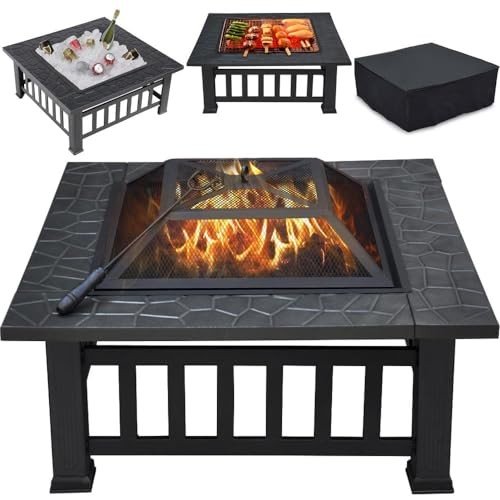You'll Never Guess This Fireplaces's Benefits
Fireplaces in the UK: A Comprehensive Guide
Fireplaces have long been an integral part of British homes, providing both aesthetic charm and functional warmth. As Cheap Fireplaces UK turns chilly, the allure of a cozy fire beckons, transforming any living area into a sanctuary. In this short article, we will explore the numerous types of fireplaces offered in the UK, factors to consider for installation, maintenance tips, and responses to often asked questions about fireplaces.
Types of Fireplaces
When selecting a fireplace for a UK home, numerous options are offered, each with unique features and advantages. The following table sums up the main kinds of fireplaces popular in the UK:
Fireplace Type
Description
Pros
Cons
Open Hearth
Traditional fireplaces that burn wood or coal, offering a rustic feel.
Authentic atmosphere; excellent heat distribution
Less energy-efficient; needs chimney upkeep
Gas Fireplaces
Usage gas or propane; can be direct vent or ventless.
Instantaneous heat; simple to operate; cleaner burning
Preliminary installation expense; may need gas line
Electric Fireplaces
Replicate a flame utilizing LED lights and offer heat through electricity.
Safe; simple to install; no flue needed
Less authentic; greater operating expense
Wood-burning Stoves
Closed-system fireplaces that burn logs, offering high effectiveness.
High heat output; eco-friendly when utilizing sustainable wood
Minimal aesthetic compared to open hearth
Bioethanol Fireplaces
Eco-friendly choice that burns bioethanol, creating real flames.
No chimney needed; versatile design alternatives
Can be pricey to operate; minimal heat output
Pros and Cons of Each Type
Open Hearth
- Pros:
- Provides character to any home.
- Efficient heat circulation due to open flames.
- Cons:
- Less energy-efficient and more smoke than modern choices.
- Requires regular cleansing and upkeep of the chimney.
- Pros:
Gas Fireplaces
- Pros:
- Easy to manage and operate with the flick of a switch.
- Cleaner alternative with less soot accumulation.
- Cons:
- Requires a gas supply and setup costs can be high.
- Might not offer the very same ambiance as a traditional fire.
- Pros:
Electric Fireplaces
- Pros:
- Simple setup with no chimney or flue needed.
- Is available in various designs, resembling traditional alternatives.
- Cons:
- Lacks the realism of genuine flames and can end up being expensive with continuous usage.
- Pros:
Wood-burning Stoves
- Pros:
- Highly efficient and produces significant heat.
- Sustainable resource when using responsibly sourced wood.
- Cons:
- Requires additional space for log storage and regular upkeep.
- Pros:
Bioethanol Fireplaces
- Pros:
- Flexible placement due to no requirement for traditional venting.
- Clean-burning and minimal effect on indoor air quality.
- Cons:
- Can be less economical for continual use compared to gas or wood.
- Heat output is less reliable for bigger spaces.
- Pros:
Setup Considerations
When setting up a fireplace in a UK home, numerous aspects should be considered:
- Building Regulations: Ensure compliance with regional building regulations and safety policies.
- Chimney and Flue: Determine the requirement for a chimney or flue system based on the kind of fireplace chosen.
- Ventilation: Proper ventilation is vital for security, particularly with gas, wood, and bioethanol choices.
- Area: Consider the best area for the fireplace to optimize heat distribution and aesthetic appeal.
- Professional Help: Engaging an expert installer can make sure a safe and accurate setup tailored to the specific type of fireplace.
Maintenance Tips
Regular maintenance of a fireplace is important for both safety and efficiency. Follow these guidelines to keep your fireplace in peak condition:
- Chimney Sweeping: Have your chimney professionally swept at least when a year to avoid obstructions and minimize fire threat.
- Examine for Damage: Regularly look for leakages, cracks, or damage, specifically in gas and wood-burning fireplaces.
- Tidy the Surroundings: Ensure the area around the fireplace is totally free from dust and combustible materials.
- Inspect Carbon Monoxide Detectors: Test detectors regularly, particularly in homes with gas-burning devices.
- Store Wood Properly: If utilizing a wood-burning range, shop wood in a dry location to minimize wetness content.
Often Asked Questions
What is the very best kind of fireplace for a small room?
For small areas, electric fireplaces or bioethanol models are typically recommended due to their smaller size, security features, and aesthetic appeals.
Are electric fireplaces cheaper to run than gas?
Electric fireplaces generally have a lower in advance cost, but depending on electrical energy rates, they can be more expensive to run long term compared to gas.
Do wood-burning ranges need a lot of upkeep?
While they do require some maintenance, such as cleansing and routine chimney sweeper, lots of house owners discover that modern wood-burning ranges are effective and relatively low upkeep compared to traditional open hearths.
Can I install a gas fireplace myself?
While some homeowners might attempt DIY installation, it is highly a good idea to hire a professional for gas fireplace setups due to security concerns and regulatory compliance.
How can I make the most of the heat output of my fireplace?
To make the most of heat output from any fireplace, consider the following:
- Keep doors and windows closed throughout use.
- Usage heat-efficient logs or fuels.
- Make sure appropriate airflow around the fire.
- Utilize fans or blowers that can flow warm air throughout the room.
Fireplaces remain a valued component within UK homes, supplying warmth, appeal, and an inviting atmosphere. Offered the variety of options and their distinct functions, property owners can choose the perfect fireplace to match their home while making sure security and efficiency. With routine maintenance and a clear understanding of the setup requirements, anyone can take pleasure in the charm and comfort of a fireplace for years to come.
